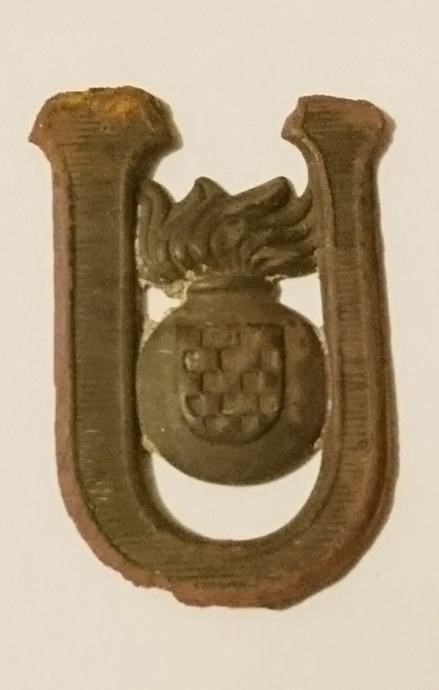Original research paper by Mirčeta Vemić, Institute of Geography “Jovan Cvijić”, Serbian Academy of Arts and Sciences: http://www.doiserbia.nb.rs/img/doi/0352-5732/2014/0352-57321447201V.pdf
UDC 94(100)”1914/1918″
UDC 343.819.5(=163.41)(493.5)”1914/1918″
DOI: 10.2298/ZMSDN1447201V
CONCENTRATION CAMP DOBOJ
(K. u. K. Kriegsgefangenenlager Doboj)
45 791 internees, 8000 (10 000 – 12 000) Serb victims
Concentration camp Doboj, according to the description by Paravac [1990] was “located on the right bank of the river Bosna, at the confluence of the river Spreča into Bosna, a kilometer and a half from the town, next to the contemporary train station in Doboj”. It consisted of nine long stables of the former horse hospital, in which infected horses were treated, mostly from glanders. The stables were never disinfected not cleaned from the debris. It was formed as a primarily internee [interned civilians, translator’s note] camp on 27. December 1915. and closed on 5. July 1917. At first it housed the inhabitants of Bosnia and Herzegovina who had escaped to Serbia during the withdrawal of the Serbian military from Drina. Among them were mostly women and children. The occupying authorities had promised them “a return to their homes” and instead they were put into this concentration camp. Besides the refugees from Bosnia and Herzegovina which arrived continuously into the concentration camp in groups of 600-800 persons, more than 5000 men, women and children were deported there from the county of Belgrade immediately after Belgrade was taken.
In this concentration camp the internees were not forced to work, due to their sex and age structure, but died en masse due to inhumane, that is to say animalistic accommodations, famine and disease (flu, spotted fever, dysentery, smallpox [variola vera major], cholera, etc), while often being punished by hanging. They would lie in stables with loads of manure and trash without beds or mattresses, even without any straw, in an environment full of insects. As it was described by Ćorović [1920, 1996], “the people did not have enough water for ablutions, let alone washing, even though [the river] Bosna flowed meters below”, as they were not allowed to go to the water. The food looked like pig’s wash. It mostly consisted of tea and starch soup made of beets, with a quarter of a bread per week and “for a certain time the also gave out stinking fish or cheese filled with maggots, which the hungry slaves still ate with nausea” [Paravac 1990]. The meals were handed out three times a day, without any vessels, in dirty cans, for which every single one of them had to go in a column for a kilometer and a half to the train station. When once the Austro-Hungarian officer, Dr Geber, spilled that soup to see its content “he said that he would not have his boots washed in water like that!” [Ćorović 1920, 1996].
The internees firstly died individually, and “then more and more, 10, 15, 20 a day until in one day, 5. April 1916., 92 persons died” [Ćorović 1920, 1996]. Only in the month of April 1916. 643 children died. The dead were loaded like firewood on a cart and buried them together by the dozens in shallow graves in the Bare cemetery in Doboj. When one day at the bottom of this cemetery a big grave by the road started leaking blood through a canal, the sight was unbearable and a new cemetery was built for the internees on the right bank of the Bosna under the village of Pridjel. In these pomors whole families would disappear and those who would survive at first were sent to other concentration camps, mostly to Sopronnyék and Arad. According to the research by Pravac [1990] the order to liquidate Concentration Camp Doboj came towards the end of 1916. when the collapse of Austro-Hungarian Monarchy was being intimated. At the time there were 2500 internees. It was ordered that “the surviving remains are to be returned to their homes”, fully aware, according to the words of General Sarkotić that “those wretches no longer have any homes, those are all ashes now”. The disbanding lasted until 4. February 1917. when “the most silent, even though more vicious than the Arad one” great human suffering was ended. Their bones were exhumed only in 1938., around “8000 old men, women and children”, which were entombed “carefully and ceremoniously into a tomb in Doboj” [Paravac 1990]. This great memorial ossuary made of granite was demolished by Croatian Ustaše in 1941. and again strewed the bones of the victims, which stayed as they were until the liberation in 1945.
However, it became obvious that to this day not all the graves of this concentration camp were found and exhumed. In the autumn of 1968. in the village of Pridjel, when the workers of a construction company were ploughing over the land with bulldozers while working to expand the rail junction, they discovered many individual graves and mass tombs. Among the mortal remains in these tombs there were bones of older and younger children. They were all re-buried in the vicinity. As the entire area of the village was not encompassed in the construction work, it is thought that there are more undiscovered tombs in it. Taking that into account, the final number of the victims of the Doboj concentration camp is estimated to 10 000 – 12 000.
Translated by Books of Jeremiah



